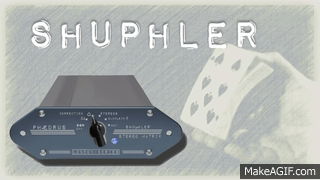
For the first time ever, one unit contains Blumlein's original shuffler circuit, (which permits pin-point sharp stereo recordings to be made with near-spaced omni' microphones) and the Stereosonic shuffler developed for the famous tube consoles of the 1960s.
In addition, the unit provides sum-difference processing for MS microphone arrays, FRANCINSTIEN stereo enhancement, and an entirely new stereo correction technique for crossed cardiods, ORTF and NOS arrays.
Two versions of the SHUpHLER II exist: a no-holds-barred valve (tube) version incorporating transformer I/O for professional level, balanced signals; and a low-cost, unbalanced, version incorporating class-A FET amplifiers designed especially for educational and research applications.
The SHUpHLER II has a completely re-engineered matrix to improve upon the original circuit and is available in the new grey livery to match the PHAB-S and the PHUSION.
Read the review of the Phædrus Audio SHUpHLER.
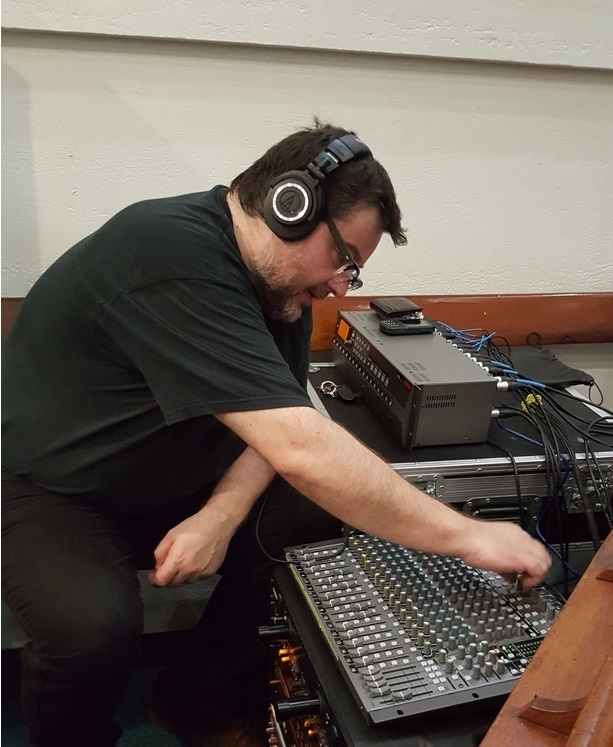 Just a quick note to say how impressed I have been with the Shuphler. I have it hard-wired into the final stage of my mixing/mastering chain, and it has been used in studio and live-mixing situations. I engineer Classical Music predominantly, and the ability to "glue" the stability of the stereo image using the various Shuphler settings (depending on the mic'ing) has made a huge improvement to the results of my labours. I use a lot of spaced pairs simultaneously, and to run them all through the Shuphler (usually Blumlein setting) makes for a much more forceful "presence" of the Orchestra and Soloists. It is an essential piece of my audio chain now.
Just a quick note to say how impressed I have been with the Shuphler. I have it hard-wired into the final stage of my mixing/mastering chain, and it has been used in studio and live-mixing situations. I engineer Classical Music predominantly, and the ability to "glue" the stability of the stereo image using the various Shuphler settings (depending on the mic'ing) has made a huge improvement to the results of my labours. I use a lot of spaced pairs simultaneously, and to run them all through the Shuphler (usually Blumlein setting) makes for a much more forceful "presence" of the Orchestra and Soloists. It is an essential piece of my audio chain now.
Cheers, Michael Conolan
Despite being discussed since the earliest days of stereophony, there remains much confusion about the term Stereo Shuffling. This is not surprising because the term actually refers to two, quite separate and different techniques.
Simply put, the earliest use of the term (coined by no less than Alan Blumlein himself), refers to the processing of near-spaced omni' microphone signals so that they reproduce correctly on loudspeakers.
The second Shuffler was invented some twenty years later for the processing of crossed, cosine (figure of eight) microphone signals to give better realism.
Why use the same name? Well the later "Shuffler" was invented by the same team who had worked with Alan Blumlein before he was killed in WW2. Perhaps they sought to honour him in adopting the term which derived from him?
In any case, the Phædrus Audio SHUpHLER II incorporates both type of historical Shuffler, plus some newer shuffling (or matrix) processes, so that you can experiment and use these amazing techniques on your own recordings.
The Phædrus Audio SHUpHLER II is a line-level device which employs entirely class-A, tube circuitry for the matrix buffering and line driving. Inputs and outputs are fully transformer-coupled and earth free. The device has a high overload margin (>+20dBu at 1kHz), and low-noise, so that it's equally useable connected at insert-points, across the stereo bus/ stereo signal or used in a balanced or un-balanced send-return loop with a DAW.
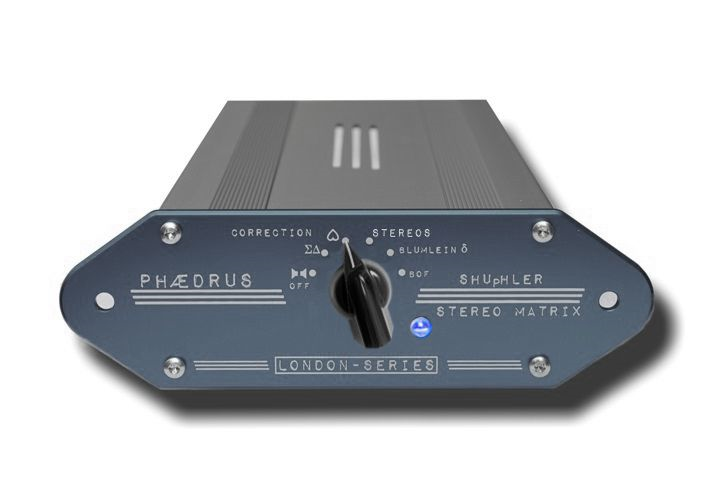
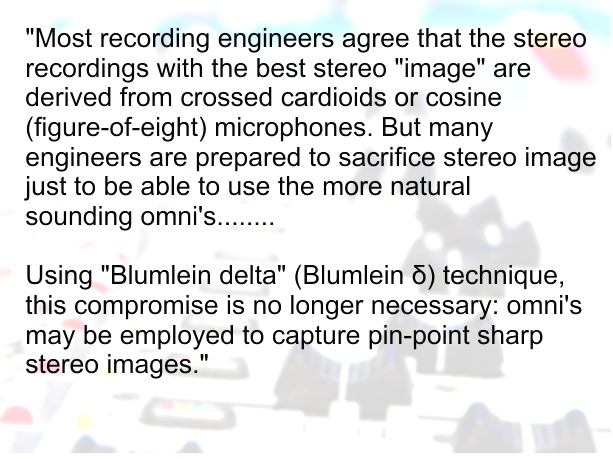
The front panel of the SHUpHLER II is simplicity itself. In addition to the "off" position, five selectable shuffling techniques are available, each of which is described below.
 This is effectively the "OFF" position. In this position, the input signals are left unprocessed and simply pass through the transformer-coupled, tube amplifiers. The electronics adds a certain "antique" feel to the sound. In this mode the SHUpHLER is a two-channel device and the two input signals need not be correlated; as they are in a stereo signal.
This is effectively the "OFF" position. In this position, the input signals are left unprocessed and simply pass through the transformer-coupled, tube amplifiers. The electronics adds a certain "antique" feel to the sound. In this mode the SHUpHLER is a two-channel device and the two input signals need not be correlated; as they are in a stereo signal.
ΣΔ In order to accommodate the various signal manipulations inside the SHUpHLER, sum (Σ) and difference (Δ) signals are generated. Without further filtering, these signals are appropriate for decoding signals derived from mid-side microphone technique - a well established practice. The SHUpHLER contains the appropriate matrix to decode these signals to L/R with great accuracy. The "mid" microphone (normally a forward-facing, cardioid or omni') should feed the "LEFT" input, and the "side" microphone (a cosine microphone mounted perpendicular to the audio stage) should be connected to the "RIGHT" input. Depending on the phase response of the microphones, the left-right outputs may be reversed: only experimentation will tell. In the event of a left right swap, either re-route the signals, or reverse the direction of the cosine, "side" microphone.

 The shuffling technique selected here is an entirely new technique and is intended to compensate for various shortcomings in crossed-cardioid recordings which are usually accused of lacking "spaciousness"
The shuffling technique selected here is an entirely new technique and is intended to compensate for various shortcomings in crossed-cardioid recordings which are usually accused of lacking "spaciousness"
The directional response of a cardioid microphone is equivalent to the combination of a cosine (figure-of-eight) and omni-directional response. (In fact, the earliest cardioid microphones were made in this way). So, the signals from a crossed-pair of cardioid microphones are mathematically equivalent to those produced by a crossed pair of eights, mixed equally with a mono signal. It's not surprising this technique is often accused of lacking "spaciousness". The truth is, the only reason the crossed-cardioid technique gives reasonable results is due to the HF "beaming" of the microphones which cause high-frequency channel differences to predominate over the mono signal at higher frequencies.
 One way to improve the situation is to set the microphones at a greater angle than 90 degrees, or separate them slightly, so as to add a time-delay "helper" cue, as is done in the ORTF and NOS arrangements. But, it is also possible to correct for the effect of the unwanted, omni-response electrically; and that is what is done in the SHUpHLER when the switch is in the ♥ position.
One way to improve the situation is to set the microphones at a greater angle than 90 degrees, or separate them slightly, so as to add a time-delay "helper" cue, as is done in the ORTF and NOS arrangements. But, it is also possible to correct for the effect of the unwanted, omni-response electrically; and that is what is done in the SHUpHLER when the switch is in the ♥ position.
One special advantage of the electronic process is that the correction results in a suppressed rear-lobe. Because this looks like half of an eight response (see diagram), we term this technique, Phædrus crossed-fours™. Musical examples of the crossed-fours technique as a FLAC file are here. The first part of each musical extract (taken from rehersal tapes) is the signal direct from the microphones and the reprise is treated with the "crossed four" process. Beware.. this is a 42MByte file; FLAC is great but the file sizes are appreciable! An alternative 192kbps mp3 file is here.
When the British team developed the Stereosonic, two-channel, stereo recording system after the war which killed its inventor Alan Blumlein, they incorporated special circuitry which corrects for known problems with a standard stereo signal.Read Hugh Robjohns explanation of the problems with intensity-coded (pan-pot) stereo from the Sound on Sound review of the Phædrus Audio SHUpHLER.
In naming this special circuit, its inventors (H. A. M. CLARK, G. F. DUTTON and P. B. VANDERLYN) honoured their old boss (Blumlein) in borrowing the term he had coined for an earlier stereo processor and called it the Shuffler. Unfortunately, this borrowing of the earlier term has led to much confusion about stereo "shuffling" over the years because a "stereo Shuffler" is actually two, quite different inventions which share a common name!
For a full description of their work, Clark (et al.)'s paper is available here.
In effect what Clark, Dutton and Vanderlyn found was that, a standard, panned stereo signal (or that derived from crossed-mic's) has the drawback that, for a given position away from centre, or of the pan-pot away from the centre, the high-frequency components of a signal actually appear further from the centre in the reproduced "stereo-image" than do the lower frequency components. This is directly reproduced from their 1958 JAES paper.
The circuit to introduce the 0.7 loss-factor in the ratio (R - L)/(R + L) above 700Hz is the circuit Clark and his team called the Shuffler. To avoid confusion, we suggest that Clark's circuit be termed the Stereosonic Shuffler, reserving Shuffler for Blumlein's original circuit (more on this later!).
The result of not utilising this Stereosonic Shuffler, on a real music signal is a "smeared" stereo image in which the high and low frequencies are not "mapped" on top of one another. The image below is an attempt to give a visual analogy for this effect in which the acoustic effect is analogous to chromatic aberration in a lens, in which the high frequency blue light is refracted differently to the low-frequency red light.

The solution to this was to incorporate sum and difference circuits into the stereo bus of the mixers (derived in a series of transformers) and introduce HF loss into the difference circuits so that, when matrixed back to left and right signals, the required correction had been made.
This method however has the disadvantage that the HF-loss filter-circuits require phase-correction to be applied and moreover require that the sum circuit be delayed.
The result, together with the matrixing transformers, is a very expensive assembly, illustrated below.
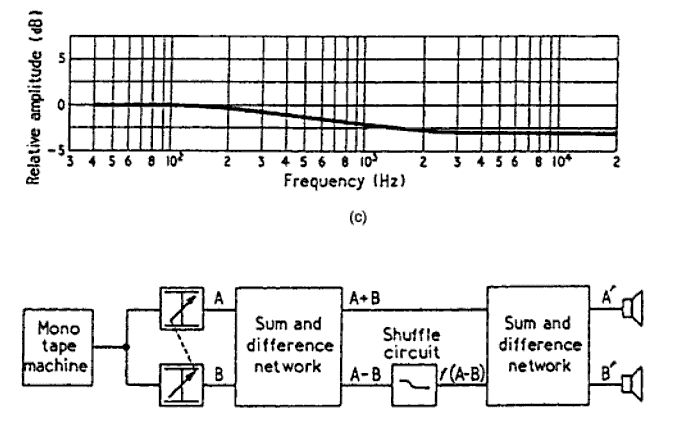
This expense, as well as irresolvable problems of slight audio colouration due to inaccuracies in the phase-correction circuits (note the hand-written "almost" and "substantially" in the text above.), led this vital circuit to be ignored in later stereo equipment. Uncorrected stereo was reckoned to be "good enough".
It's important to point out what this actually means: that all stereo recordings are "broken" and have been since Electronic and Musical Industries' management sanctioned throwing the last of their tube mixers on the dumpster. (Yes, they really did that!).
The SHUpHLER incorporates a modern (yet still completely passive) implementation of the Stereosonic Shuffler in which the uneven frequency-response and group-delay problems of the original implementation have been entirely resolved.
Audio demonstrations of the Stereosonic Shuffler are available here
Blumlein δ The greater part of Alan Blumlein's (1933) patent is concerned with a binaural stereophonic microphone arrangement in which,
"two pressure microphones a1 and a2 [are] mounted [20 cm apart] on opposite sides of a block of wood or baffle b which serves to provide the high frequency intensity differences at the microphones in the same way as the human head operates upon the ears".
Blumlein noted that, when listened to with headphones, the direct output from the microphones produced an excellent stereo effect but, when replayed through loudspeakers, the stereo effect was very disappointing. The transformation Blumlein required was the translation of low-frequency, inter-microphone phase differences into inter-channel intensity differences. To do this, he invented an ingenious circuit which he called the Shuffler. (His was the original use of the term.) A modern implementation of Blumlein's circuit is implemented within the SHUpHLER. The full technique is explained here.
The advantages to the recording engineer of this technique are legion. Omnis are usually considered to sound slightly more "open" and "uncoloured" than their cardioid brothers; even as mono microphones. This is due to the acoustical devices which cardioid mic's employ to deaden the sound in the rear lobe of the directional response. Most agree that the stereo recordings with the best stereo "image" are derived from crossed cardioids or cosine (figure-of-eight) microphones. But many engineers are prepared to sacrifice stereo image just to be able to use the more natural sounding omni's.
Using "Blumlein delta" (Blumlein δ) technique, this compromise is no longer necessary: omni's may be employed to capture pin-point sharp stereo images. The microphones should be placed about 22cm apart (not widely spaced as in conventional technique). Various baffles may be inserted between the microphones to good effect too, so this technique suits various binaural and quasi-binaural microphone arrangements like the Jecklin's OSS disc, Faulkner's "Phased-array", the various spherical microphone baffles and the in-ear microphones available on the market. (In fact Blumlein saw the δ technique as a binaural to loudspeaker-stereo conversion process: which is what it is!)
An example of the process is given here as a FLAC file. Once again, The first part of the musical extract is the signal direct from near-spaced omni microphones and the reprise is treated with the Blumlein δ process. Beware.. FLAC is great but the file sizes are appreciable! An alternative 192kbps mp3 file is here.
The technique of near spaced microphones may even be extended to use near-spaced cardioids which enables very nice recordings to be made which suppress rear pick-up. In fact, even hyper-cardioids and gun microphones may be employed which permit good, full-width stereo recordings to be made of relatively distant events - something which no other technique can achieve. This has obvious applications to TV, film and live theatre and music.
BoF stands for Bride of FRANCINSTIEN which is very new shuffling technique. The BoF technique is a development of the original FRANCINSTIEN circuit which was launched during the 1990s.
Phædrus Audio recommend that you experiment with both the BoF matrix and the original Stereosonic matrix for processing panned-stereo recordings and for processing stereo signals derived from crossed microphones. We conjecture that, because all, practical microphones tend to "beam" and become more directional with frequency, recordings made in this way have an even greater frequency-dependant smearing effect compared with those derived entirely from pan-pots. Because the Stereosonic matrix position introduces a greater degree of HF narrowing than does the newer BoF matrix, it may better compensate for HF beaming effects in crossed microphone recordings. However, as with all things in the art/science of recording, it's unwise to be pedantic: experimentation is the name of the game!
An example of the BoF Shuffler process is given here as a FLAC file. The first part of the musical extract is the signal direct from the mixer and the reprise is treated with the Bride of FRANCINSTIEN Shuffler process. An alternative 192kbps mp3 file is here.
More information on beaming in cosine microphones is given here.
The table below gives our recommendations for the various SHUpHLER matrices which may be applied in various recording situations.
| Mic' arrangement | ΣΔ | ♥ | StereoS | Blumlein δ | BoF | OFF |
|---|---|---|---|---|---|---|
| Crossed cardioids | Not suitable | Ideal*: Crossed-fours™ | Good results | Not suitable | Good results | No processing |
| Crossed cosines | Not suitable | Possible; widens image | Ideal* | Not suitable | Good results | No processing |
| Pan-pot | Not suitable | Possible; widens image | Good results | Not suitable | Ideal* | No processing |
| Near spaced omnis | Not suitable | Possible; narrow image | Worth a try! | Ideal* | Worth a try! | No processing |
| Near spaced cardioids | Not suitable | Possible; narrow image | Worth a try! | Ideal* | Worth a try! | No processing |
| Near spaced hypercardioids | Not suitable | Possible; narrow image | Worth a try! | Ideal* | Worth a try! | No processing |
| Binaural microphones | Not suitable | Possible; narrow image | Worth a try! | Ideal* | Worth a try! | No processing |
| Phased array cosines (Faulkner) | Not suitable | Possible; narrow image | Good results | Ideal* | Good results | No processing |
| Wide spaced omnis | Not suitable | Not suitable | Good results | Not suitable | Good results | No processing |
| NOS | Not suitable | Worth a try! | Good results | Good results possible | Good results | No processing |
| ORTF | Not suitable | Worth a try! | Good results | Good results possible | Good results | No processing |
| Middle & side | Ideal* | Not suitable | Not suitable | Not suitable | Not suitable | Not suitable |
| Decca Tree | Not suitable | Not suitable | Good results | Not suitable | Good results | No processing |
"I have been doing some experiments over the last few weekends, re-auditioning stereo recordings I have made with a variety of mic' arrangements and re-processing them with the SHUpHLER. Although I've tried Stereosonic shuffling, my own FRANCINSTIEN process, as well as Blumlein-Delta over the years, I have never had all the processes in the same box with a switch to select between them.
I've had hours of fun listening to Blumlein-shuffled, near-coincident recordings for example, a process which adds tremendous LF "bloom" and LF directivity.... teasing information out of the stereo signal I recorded twenty years ago that I never knew was there. Extraordinary - like an archaeologist putting a Egyptian Mummy in an MRI scanner!
It's so important to remember that a stereo recording really is a matrixing of spatial information into a correlated pair of signals: like the way 2 colour-difference signals describe all the colours in television. Stereo really isn't "dual mono" and there exist ways of releasing information apparently "trapped" in the signal."


Address all mail to sales@phaedrus-audio.com
